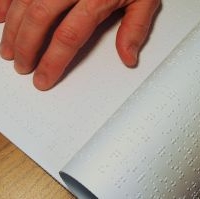Web Accessibility and a Call for Action

I was born with cataracts that could not safely be corrected with the surgical techniques available when I was a young child.
Consequently, I grew up using a combination of large print, recordings, and the Library of Congress Talking Books. When navigating unfamiliar terrain, I sometimes used a white cane—and other times walked into glass windows, poles, and other immovable objects, with occasionally painful consequences.
My fierce determination empowered me to overcome my handicap, and at age thirteen I was directly involved with passing the first laws in the state of New York to grant parking permits for the disabled. My friends and I passionately worked for equal access, and today you see ramps, curb cutouts, and elevators, which did not exist before we raised awareness and worked with legislators to pass the Americans with Disabilities Act.
I also chose computing as my career because I believed computers would be fully accessible to the blind and disabled. Years later doctors perfected laser surgery, and today I enjoy perfect visual acuity, though I have occasional eye fatigue that compels me to keep the software on my computer to read the screen to me whenever my eyes need a rest.
Unfortunately, I have noticed that many websites are employing sophisticated visual effects that are making it more difficult for the blind and disabled to have equal access. This has both legal and societal consequences. I want to raise awareness about the importance of designing and configuring systems to be fully accessible to the blind and disabled.
The ADA Standards for Accessible Design provide guidance on compliant design, including web HTML and PDF designs. The World Wide Web Consortium also gives information on designing accessible websites and quotes W3C director and inventor of the World Wide Web, Tim Berners-Lee, as saying, "Access by everyone regardless of disability is an essential aspect."
From a legal perspective, it is worth noting that in the US, the Rehabilitation Act of 1973 was amended to contain Section 508, a federal law mandating that all electronic and information technology developed, procured, maintained, or used by the federal government be accessible to people with disabilities. The National Federation of the Blind has a long history of being a resource to the blind and contains guidance on web accessibility resources, even noting how to enhance your career as a web accessibility consultant.
It is important for our society to be inclusive, and web accessibility is an essential issue.
Are there any other technology professionals who are interested in promoting and implementing web accessibility standards? Let’s start a dialogue.

